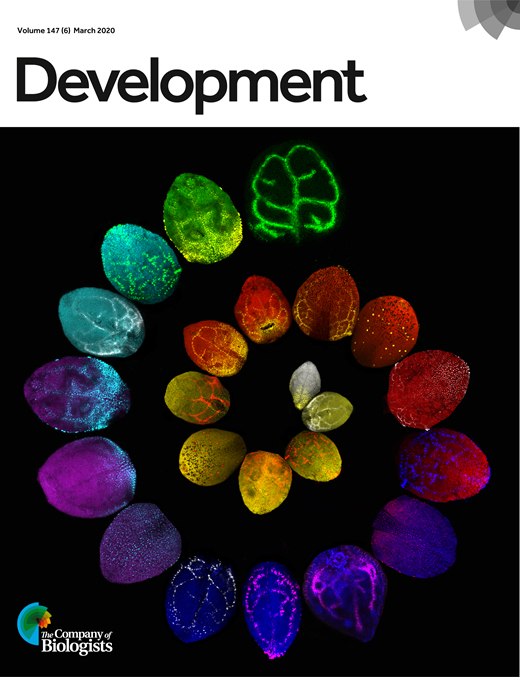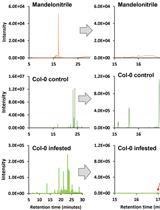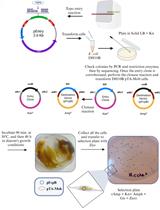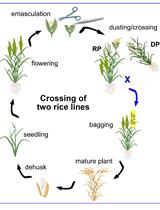- EN - English
- CN - 中文
Age, Wound Size and Position of Injury – Dependent Vascular Regeneration Assay in Growing Leaves
年龄、伤口大小和损伤部位 – 生长叶片中依赖于损伤的维管再生试验
(*contributed equally to this work) 发布: 2021年05月05日第11卷第9期 DOI: 10.21769/BioProtoc.4010 浏览次数: 5284
评审: Charles MelnykRekha R. WarrierAnonymous reviewer(s)
Abstract
Recurring damage to the aerial organs of plants necessitates their prompt repair, particularly their vasculature. While vascular regeneration assays for aerial plant parts such as the stem and inflorescence stalk are well established, those for leaf vasculature remain unexplored. Recently, we established a new vascular regeneration assay in growing leaves and discovered the underlying molecular mechanism. Here, we describe the detailed stepwise method for the incision and regeneration assay used to study leaf vascular regeneration. By using a combination of micro-surgical perturbations, brightfield microscopy, and other experimental approaches, we further show that the age of the leaf as well as the position and size of the injury determine the overall success rate of regeneration. This easy-to-master vascular regeneration assay is an efficient and rapid method to study the mechanism of vascular regeneration in growing leaves. The assay can be readily combined with cellular and molecular biology techniques.
Keywords: Arabidopsis regeneration (拟南芥再生)Background
Due to their sessile nature, plants are frequently subjected to injuries caused by biotic and abiotic factors. These injuries, when left unattended, can compromise plant immunity, growth, and even survival (Hwang et al., 2017; Radhakrishnan et al., 2020). To overcome the adversities of wounding, plants have evolved a remarkable repertoire of regenerative responses ranging from wound healing in the form of local cell proliferation to complete replacement of amputated organs, such as root tip regeneration (Ikeuchi et al., 2016; Shanmukhan et al., 2020). Although numerous studies have probed the mechanisms underlying several regenerative responses in plants, investigations regarding the regeneration potential of aerial organs are limited (Iwase et al., 2011; Kareem et al., 2015; Durgaprasad et al., 2019). Thus, despite their higher susceptibility to injury than underground organs, there is a dearth of information on regeneration in the aerial organs of plants, particularly, the leaves. Although leaves play a crucial role in plant physiology, their regeneration potential has hardly been investigated (Kuchen et al., 2012; Radhakrishnan et al., 2020).
Leaves possess an elaborate network of vascular tissue with a central midvein that transports substances back-and-forth between the main plant body. Damage to the midvein calls for prompt repair, failing which the transport of substances, and consequently the growth of the leaf and its adjacent branches, are impaired (Sachs and Hassidim, 1996; Radhakrishnan et al., 2020). Recently, a new vascular incision assay in leaves has been developed to study wound repair and tissue restoration in response to injury. The assay revealed that the mechanically disconnected parental stands are reunited by regenerating vascular tissue that bypasses the site of injury. The assay was instrumental in understanding the molecular mechanism underlying vascular regeneration in aerial organs growing in the normal developmental context. Upon injury, a coherent feed-forward loop comprising cell fate determinants, PLETHORA (PLT) and CUP-SHAPED COTYLEDON2 (CUC2), activates local auxin biosynthesis, leading to vascular regeneration in growing aerial organs (Radhakrishnan et al., 2020). Although vascular regeneration necessitates the PLT-CUC2 regulatory axis, the extent of injury acted as a limiting factor (Radhakrishnan et al., 2020). Here, we show that the regenerative ability of leaf vasculature is determined by the size of the injury, age of the leaf explant, and position of the injury along the proximodistal axis of the leaf blade.
This easy-to-master, reproducible assay can be performed using readily available laboratory supplies. The convenience of performing real-time confocal imaging and other molecular techniques, such as quantitative real-time PCR, using the injured leaves makes the assay valuable for studying the molecular players and mechanisms regulating wound-induced response and regeneration in the normal developmental context. The method will also be useful for studying the interplay between mechanisms of vein patterning during development and that of vein regeneration.
Materials and Reagents
Reagents for seed sterilization
Seeds of wildtype (Columbia) Arabidopsis thaliana
Note: For the purpose of standardization, we used wildtype plants. The assay can be performed without any modifications in Arabidopsis mutant plants to study vascular regeneration efficiency (Radhakrishnan et al., 2020).
20% sodium hypochlorite
70% ethanol
Sterile autoclaved water
35 mm (diameter) round Petri dish (Himedia, catalog number: PW050)
15% ethanol
50% ethanol
70% ethanol
96% ethanol
100% ethanol
Glycerol (Sigma-Aldrich, catalog number: G5516)
Chloral hydrate (Sigma-Aldrich, catalog number: 23100)
Sterile autoclaved water
Murashige and Skoog (MS) salt (Sigma-Aldrich, catalog number: M5524)
Sucrose (Sigma-Aldrich, catalog number: S0389)
Plant agar (Sigma-Aldrich, catalog number: A7921)
Clearing solution (see Recipes)
Half-strength Murashige and Skoog (MS) medium (see Recipes)
Equipment
Equipment for in vitro culture
Laminar air flow chamber (LAF)
Sterile pipette tips (200 µl and 1 ml)
Micropipettes
1.5 ml microcentrifuge tubes
Sterile disposable square Petri dishes, size: 120 mm × 120 mm (Himedia, model: PW050-1)
Plastic wrap (Himedia Phytawrap)
Plant growth chamber (Percival, model: AR-100L3)
Fine-point tweezers (Dumont tweezer, model: Style 5)
Sterile razor blade
Forceps
Micro-Vannas scissors, straight (Ted Pella, model: 1340)
Gloves
Face mask
Stereozoom microscope (Zeissstemi , model: 2000) for incision and sample collection
Confocal laser-scanning microscope (Leica, model: TCS SP5 II) for brightfield imaging
Microscope slides (Labtech)
Microscope cover glass, 22 × 22mm (Corning, model: 2850-22)
Watercolor brush (with small bristles)
Software
R software
Procedure
文章信息
版权信息
© 2021 The Authors; exclusive licensee Bio-protocol LLC.
如何引用
Radhakrishnan, D., Shanmukhan, A. P., Kareem, A., Mathew, M. M., Varaparambathu, V., Aiyaz, M., Radha, R. K., Mekala, K. R., Shaji, A. and Prasad, K. (2021). Age, Wound Size and Position of Injury – Dependent Vascular Regeneration Assay in Growing Leaves. Bio-protocol 11(9): e4010. DOI: 10.21769/BioProtoc.4010.
分类
植物科学 > 植物发育生物学
生物科学 > 生物技术
您对这篇实验方法有问题吗?
在此处发布您的问题,我们将邀请本文作者来回答。同时,我们会将您的问题发布到Bio-protocol Exchange,以便寻求社区成员的帮助。
Share
Bluesky
X
Copy link













